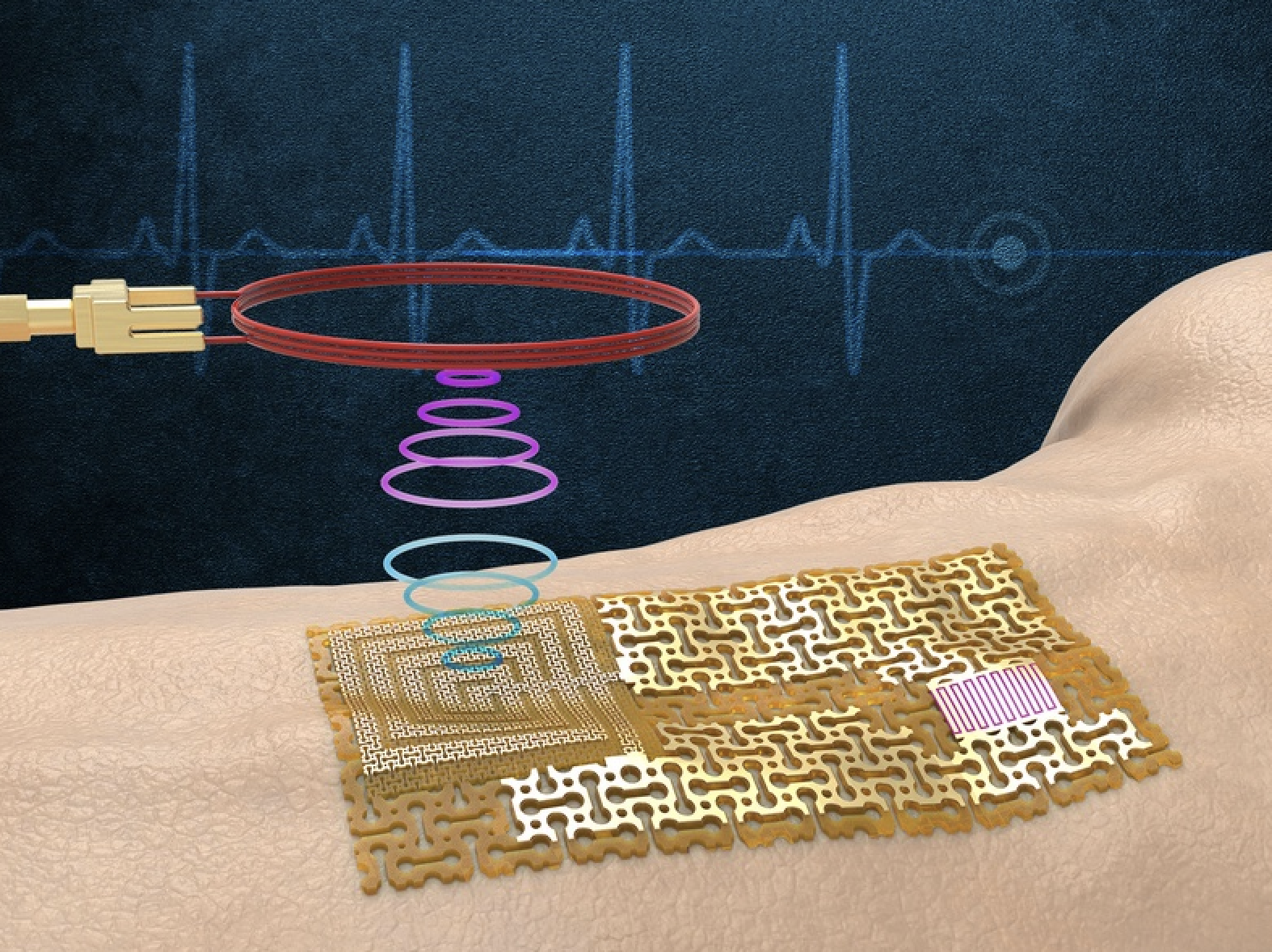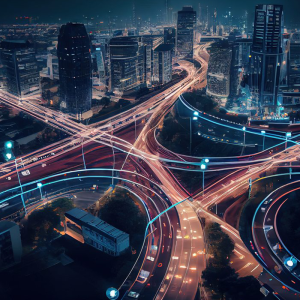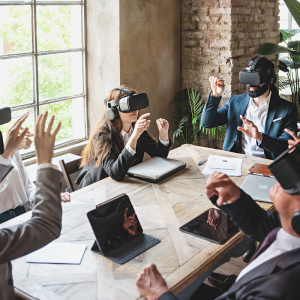Sensory Immersion
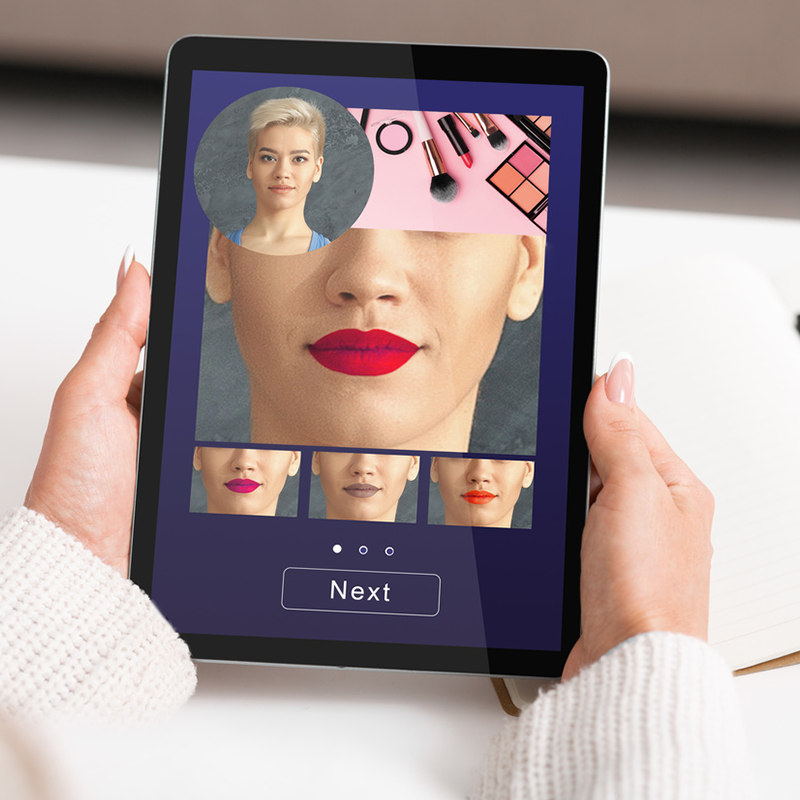
Key Takeaway:
Many digital consumers already use beauty apps for virtual makeovers, and there's a growing demand for immersive online shopping experiences. In particular, digitizing smell has many potential benefits, such as better detectors for disease and a new dimension to immersive experiences in the metaverse. And although challenging, advances in AI tools are driving current innovations in this field.
Trend Type: Technology
Sub-trends: Sensory Shopping, Digital Smell
According to Euromonitor, 29% of the global digital consumers report using a beauty app for a virtual makeover or product trial before purchase. And a growing comfort with Web3 is increasing consumer appetite for sensory shopping with early signs of consumers hungry for more immersive shopping experiences in the multi-sensory era of e-commerce. As projected by Euromonitor, a 42% growth is expected in online beauty and personal care sales, from 2021 to 2026.
Euromonitor concludes that in 2023 and beyond, consumers will demand even more immersive online shopping experiences, other tech advances will make multisensory e-commerce a tangible reality, more mass market brands will embrace sensory shopping and brands will begin to integrate sensory immersion into their metaverse platforms.
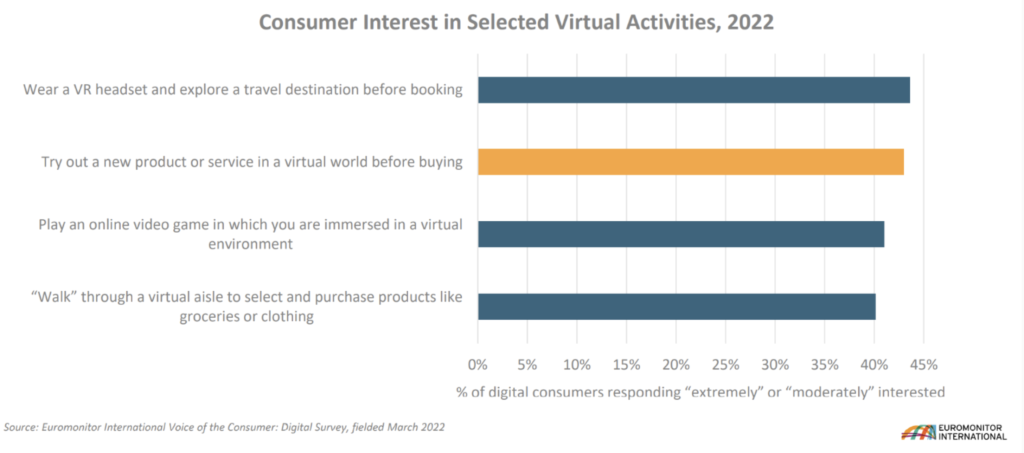
For instance, digitizing scent is a complicated process, but smell tech is making significant progress that could affect industries including food, retail, healthcare, and more in the coming year. While light and sound can easily be measured with sensors and mechanically replicated to create a predictable sensory experience, odors are much harder to decode as they’re based on a complex interaction between molecules and smell receptors. Further, many seemingly distinct aromas — like baking bread or freshlybrewed coffee — emerge from hundreds of different molecules being detected in tandem. People can also react to the same set of molecules differently, so even agreeing on what an odor should smell like is complicated.
Despite these challenges, digitizing smell would offer lots of benefits. For example, being able to accurately measure, analyze, and predict odors could lead to better detectors for disease, explosives, or food ripeness. Food and beauty companies could use smell prediction to experiment faster and more cheaply by identifying potential products that consumers would actually enjoy. Meanwhile, being able to accurately digitally encode and recreate a smell would offer a new dimension to immersive experiences, like those being built for the metaverse. Now, after years of toil, smell tech is making progress. Startup activity is ramping up, and researchers are announcing notable advances in understanding smell. As in other fields of innovation, one big driver has been powerful AI tools.
Use Cases
Sensory Shopping: Amorepacific and MIT unveiled a wearable chipless and wireless skin measuring device, which monitors a user’s skin and provides digital feedback.If Amorepacific and MIT’s wearable tech proves scalable, brands will be able to incorporate tactile feedback into the online shopping experience.
Digital Smell: OVR Technology is building a smell emitter directly into VR headsets. The company is initially targeting wellness experiences and immersive training applications.
Digital Smell: Koniku claims to use living cells in its smell detectors, which use machine learning for pattern recognition. The company aims to use its devices to detect a host of diseases from pre-identified biomarkers — similar to how some dogs can accurately sniff out certain medical conditions — and to detect explosives. Koniku announced an extension of its partnership with Airbus in July 2022 to apply its smell detection technology to aviation security. The startup has raised more than $1M in equity funding
Sub-Trend Sources
Sensory Shopping: Euromonitor Digital Shopper Trends
Digital Smell: CB Insights Tech Trends 2023; Wunderman Thompson The Future 100
What to Read Next
Decentralization & Interoperability
Technological decentralization can be defined as a shift from concentrated to distributed modes of production and consumption of goods and services. In automation, for instance, decentralized systems are composed of[...]
Cloud & Security
While AI adoption globally today is more than double that in 2017, according to McKinsey, the proportion of organizations using AI has leveled off to around 50-60% in recent years.[...]
Metaverse
Metaverse is a combinatorial innovation made up of multiple technology themes and trends. Individually, these trends are projected to provide new opportunities, and challenges, to organizations across a broad spectrum[...]
What to Read Next
Decentralization & Interoperability
Technological decentralization can be defined as a shift from concentrated to distributed modes of production and consumption of goods and services. In automation, for instance,[...]
Cloud & Security
While AI adoption globally today is more than double that in 2017, according to McKinsey, the proportion of organizations using AI has leveled off to[...]
Metaverse
Metaverse is a combinatorial innovation made up of multiple technology themes and trends. Individually, these trends are projected to provide new opportunities, and challenges, to[...]
